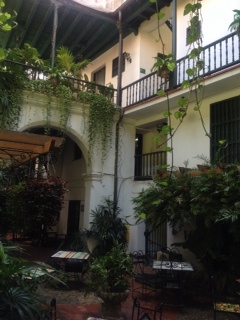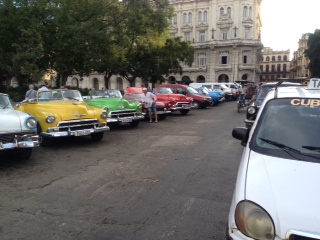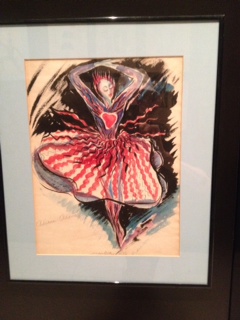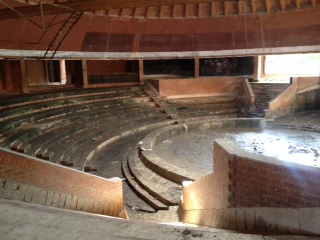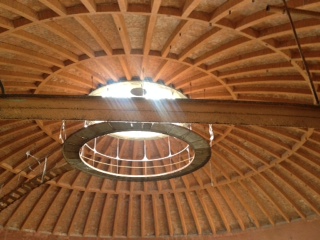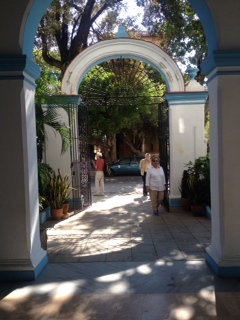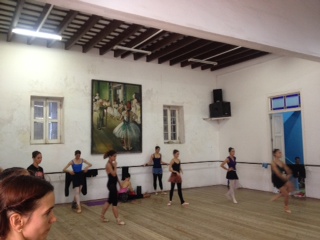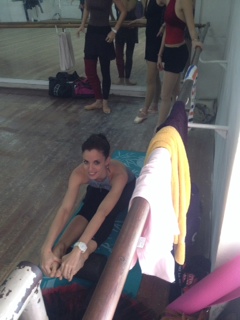Old Havana Courtyard
To be in Havana this past week was exciting. Media crews from all over covering the Normalization and Trade talks made Havana seem like the center of the world. And in a way it now is: the re-emergence of this small island country--more recently a political football after being the richest center in the Western Hemisphere for 250 years-- to the 21st century world stage has most Cubans more than eager.
Yes, huge billboards still confront you when you exit the airport and on the way into town. "Unidos, Vigilantes y Combativos" it says plastered over a huge picture of Castro, as you pass the mangy black dog, the banana trees, the horse and buggy, the forties and fifties era cars. "La Revolucion Adelante!" It feels as if nothing may have changed. But actual stages, specifically for dance, are places were some Normalization has already occurred.
For part of my express culture tour of Havana, I hailed a very old taxi and negotiated a fee upfront. The seats had been recovered in brocade but there were no handles on the inside so the driver had to get out each time to open the door. Finally after a few stops, the car broke down entirely and the driver got out and fiddled around under the hood, literally rubbing wires together to get us going. When the driver got back in, he merely shrugged his shoulders and said "Russian car" and laughed. The cars one sees on the streets are either the Russian Lados or the old pre-Revolution US vintage models from the forties and fifties (some in pristine condition for tourists, others utterly dilapidated used as taxis for locals instead of the busses which are so overcrowded that it's almost impossible to arrive at work on time).
Line up of Havana taxis
Our small group (courtesy of Fundacion Amistad, a long time bridge between the two countries, and especially its indefatigable leader, Luly Duke) was able to have many doors opened to public and private channels both artistic and diplomatic. Our Mission in Cuba (it’s not an official Embassy) also has done much to cement good relations with the local artistic community. There seems to be much to celebrate as a direct result of their interventions and it’s clear that they are hopeful about culture being viewed as an example for normalization. Negotiations are ongoing, however, so all hands are careful not to antagonize for fear of derailing any ongoing conversations or collaborations. My own research shows that Dance, Music, Film Art and Theater which have Biennials devoted to their practitioners are already being affected by their good efforts. To a certain extent, like most of the cars on the road, Cuban Dance has also been frozen in time. The many disciplines--ballet, modern, afro-cuban, folkloric, Spanish (flamenco) and even salsa--have their historic communities.
It's important to remember that dance in general, but especially ballet, is as important in Cuba as baseball, or so the dance aficionados in Cuba (and elsewhere!) like to think. For the generation which came of age before the Cuban Revolution in 1959--and even the subsequent ones--there is ample evidence that this is still the case.
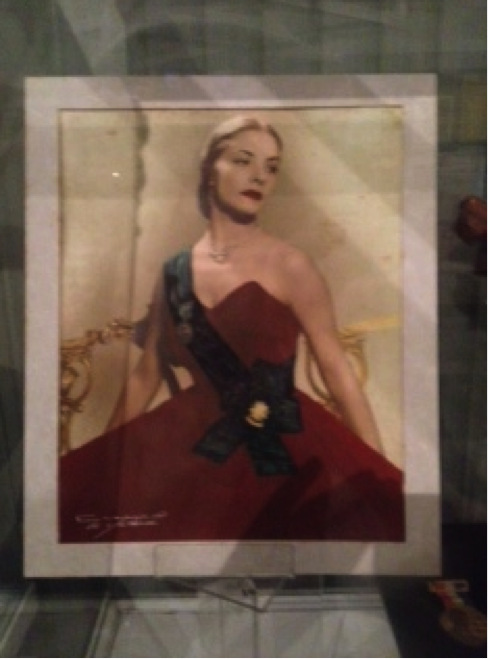
Alicia Alonso with medalCredit: Courtesy National Dance Museum , Havana
Ballet is pre-eminent. Why: because Alicia Alonso, the doyenne, diva and co-founder of the Cuban National Ballet is still alive and fiercely protective of her fiefdom. The Museum of Dance, an old palacio converted to house her personal collection affirms this lifelong commitment.
For those who have never heard of Alonso, a brief recap is available here. She was among a very small pack of international dance stars from Russia, England and the US who absorbed and passed on the exacting traditions of classical ballet-- without regard to nationality. She danced in the US with ABT and with an early Balanchine company and all over the world as a soloist but returned to Cuba to begin the ballet company that originally bore her name.
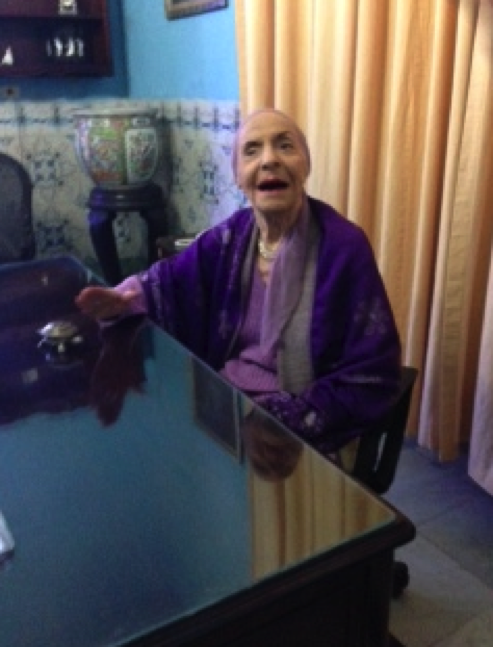
Alicia Alonso in her office with turtlePhotograph by Luly Duke, Fundacion Amistad
Today though Alonso is quite thin and almost totally blind, she hears very clearly. At 94 she is a marvel of discipline and years of fine-tuning her body. It has paid off and motivates me! She speaks and understands English--after all she worked in the US for many years-- but chose not to, though occasionally she did respond in English. My impression was that she is still very alert and aware. (See the photo of her at her desk, there is a little bronze turtle she rings every time she wants something, whether it be a translation into Spanish or something else. Charming and peremptory at the same time.) She arrives for our late morning appointment beautifully turned out, a lavender head scarf (always her uniform) a shawl in a coordinating shade of violet (Another encounter courtesy of Luly Duke). She is perfectly made up. She listens like the Swan Queen she once was, her neck long, her head tilted to the side. I know this is probably so she can hear more clearly (I am literally kneeling at her feet) but it affects me profoundly. Alonso has been partially blind since she was a teenager and though she had many operations became legally blind long ago. She danced until she was in her seventies, known especially for her Giselle and Carmen.
Drawing of an Alonso costume Courtesy National Dance Museum, Havana
Alonso has been a divisive figure, both beloved for her dedication to ballet but feared for her partisanship. For example, the architectural community is still talking of the way she abandoned the extraordinary and expensive pavilions for rehearsal and an underground amphitheater designed expressly for her at the ISA (National University of the Arts) which are now as tragically deteriorated as a Greek or Roman ruin. The ISA pavilions dedicated to the arts were built on the site of the most exclusive country club on land reclaimed for the state. (I'll have more about this tomorrow) One descends to the Ballet Section as if to the Egyptian tombs, all hopes for the Ballet complex destroyed when Alonso reportedly refused to bring the company there.
ISA abandoned ballet amphitheater
Roof of ISA abandoned theater
But Alonso is a survivor. She had her eyes on the prize, on her company, her baby, which she nourished by dint of sheer will. She had ballet, and ballet dancers and the creation of a national company at the forefront of everything she did. Yes, she has been a proud and possibly arrogant woman, single-minded as artists who are creating big things often are. I heard much about the frustration and sadness--all around--that the complex time the Revolution engendered. At the outset, artists were clearly excited and hopeful and had every reason to believe things would get better for them. Alonso made it work for her. She was determined to bring professional ballet to Cubans.
One of Alonso's champions (Arnold Haskell, and there are many) wrote in 1970 of her fierce dedication to the cause when there were supposedly no divisions between farm workers and artists:
"At 5:30 am, before the heat, the dancers have to fill plastics bags for coffee planting. Alicia in a large peasant straw hat squats on the ground among her dancers...and fills the bags...the sun burns down fiercely... Alicia and her dancers plod on laughing joking and singing until the task is complete"
Alonso's dancers are marvelous and world class. At a rehearsal in a domestic studio behind a courtyard that is much less modern than the one they would have inhabited at the ISA, I catch the tail end of a company class.
Luly Duke at Entrance to Rehearsal studios Cuban National Ballet
Company Class at Cuban National Ballet
A Degas reproduction is prominent on the back wall. The prima ballerinas are on the floor stretching and waiting as the corps responds to the shouted cues of their ballet mistress. They are lovely and gracious and come to say hello and kiss my one cheek as I learn is the Cuban way--even though they don't know me. It is hot and sweaty and un-airconditioned--and totally inspiring.
Prima Ballerina Cuban National Ballet
When I ask Alonso about the thaw in US-Cuban relations, the historic events of the week and if she is happy about that, she simply says, "Who wouldn't be? Imagine if they were able to freshen up their very conservative repertory with Forsythe or Millepied or Peck or could pay new choreographers to do things especially for them.
This is a very touchy subject. A number of Cuban dancers have defected over the years. This has been painful for Alonso and the Cuban community, and for the government. They were considered "dead" to the company, names not allowed to pass dancer's lips. But during the recent dance biennial, a number of expat dancers returned including a dancer whose father had defected to the US and been allowed to return and dance with a Cuban partner. This was an important thaw in US-Cuban ballet relations and an example of how the arts are changing things.
By way of comparison, now Anna Nebtrenko and Valery Gergiev are being called out as loyalists to the repressive Putin machine and Gustavo Dudamel is accused of silence about the Venezuelan government to which he owes so much. If the Cubans are any historical measure, it is nigh on impossible to receive funding from repressive regimes unless one either expresses public loyalty or opts to stay out of the fray. Careers are due to the free education which made it all possible. And not all artists can afford to risk leaving home and family.
But the good news is that Ballet Hispanico of NY was recently in Cuba, the Joyce Theater is there now continuing their cross fertilization with the Cuban Mal Paso company (which performed in NY last spring with Ron Brown participating) and Trey McIntyre is collaborating with Cuban dancers.
Flamenco was also available in old Havana and The Ballet Espanole de Cuba was performing in the beautifully restored 19th century Jose Marti theater.
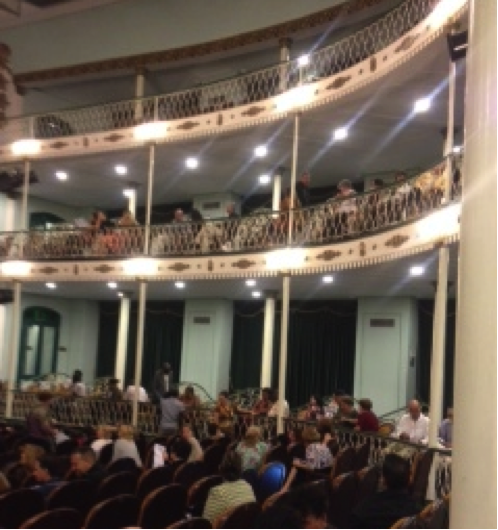
Interior of Jose Marti theatre
I did not particularly care for the odd hybrid of ballet and castanets but the final number, pure flamenco, shows that this Spanish tradition is alive and well in Havana. The dancers were high-spirited and technically competent but they too in want of better choreography. I could easily see these Cuban dancers coming to the states to teach this discipline alongside their Spanish colleagues as a number of flamenco dances went to Cuba and back to Spain in the earlier part of the century (e.g. the Guajira) and were measurably enhanced.
On the pre-professional end of the dance spectrum, there is the ISA, including dance, ballet, contemporary, afro-cuban, modern, music and all the plastic arts. Compared to the domestic, cramped National Ballet studio this white,light enormous space is akin to a New York City Ballet studio. I am lucky to arrive at the outset of a class in Afro-Cuban and the three bongo drummers are already warming up. The teacher is caring but firm, the students gay and eager, they are ablaze in their leotards and brightly colored skirts and a singer who is as vibrant and talented as Miriam Makeba suddenly bursts into song next to me. (I was not able to get her name) I had to resist getting up to try to join them so uplifting it was in an entirely different way. I was told the curriculum is conservative here also, but the students are marvelous and open.
In the plastic arts division I meet a German exchange student who could say nothing but fantastic things about his experience. Sarah Lawrence College has instituted a program for its students to study abroad at ISA and receive credit.
Of course on a personal level it was salsa--a great Cuban and Latin American import to the US-- that was high on my list. I discovered a salsa school in a rundown building over a trinket shop in Old Havana near the central square. Along with an entire family who lived there (the gramma, a mentally challenged sister, a mother in law, and two children and their parents) but armed with a killer sound system and a tiny dance space with a mirror, the owner and his staff managed to teach me, and a fellow traveler from Turkey, to improve our salsa in a couple of lessons. I had taken a few lessons before and have gone clubbing in LA and NY but this high intensity Cuban salsa was not the same. You can find a more detailed explanation of the Cuban style which luckily emphasizes a lot of showing off by the male so I could just follow along here. It was hot and sweaty and fantastic.
Cuban Salsa professionals
As far as I'm concerned, if all the diplomats engaged in the normalization talks went salsa dancing together, it would happen overnight.
For a tiny island, Havana is rich with dance as a new book of photos by Gabriel Davalos attests.
Art and artists have no boundaries. It's just a matter of getting the wires close enough to rub together.
All photographs by Patricia Zohn except as noted
Learn more about travel to Cuba with Fundacion Amistad
This post is part of a Huffington Post blog series called "90 Miles: Rethinking the Future of U.S.-Cuba Relations." The series puts the spotlight on the emerging relations between two long-standing Western Hemisphere foes and will feature pre-eminent thought leaders from the public and private sectors, academia, the NGO community, and prominent observers from both countries. Read all the other posts in the series here

